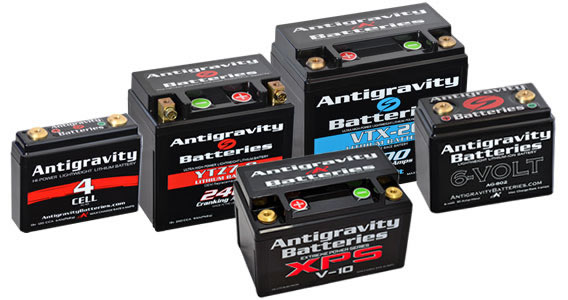Things to know when switching from a lead acid battery to a lithium ion battery.
Posted by Damian Ercole on 31st Mar 2022
If you haven't already considered a lithium ion battery, I'm sure you have at least heard of them.

No one likes change, especially when change involves changing from something that’s very familiar and does the job. Lithium ion batteries (LIB) are relatively new to the powersports industry and they are quickly gaining traction and popularity for a number of reasons. Lead acid batteries have done the job of starting vehicles and storing energy for years, however if taken care of properly, lithium ion batteries do a much better job than their prehistoric counterpart. Lithium batteries are smaller, weigh significantly less, can be mounting in any orientation, are more resilient to vibration and contain much more power proportionally. Yes, they are more costly, however when taken care of properly, they can last longer than lead acid or AGM batteries. For example, I built a rigid chopper with a rigid mounted engine and was going through about a battery a year due to all the vibration generated from the ride and the engine. I installed an Antigravity AG1201 about 7 years ago and it’s still going strong. Not once has this battery let me down. My battery is rarely on a tender and the bike is stored in a non-climate controlled garage.
Here are some things to keep in mind if you decide to make the switch.
#1) Lithium ion batteries are much more sensitive to over-charging and over-discharging. They like to be in the range of 14.5v on the high side and 11v on the low side. If your battery exceeds 14.5v or if the voltage falls below 11v, you risk damaging the cells beyond recovery. If you have a vehicle built prior to 2000, it’s a good idea to check the regulator / rectifier to ensure that no more than 14.5 volts is being sent to the battery at any one time (regardless of year, it's good practice to double check your charging system before installing a lithium battery). Voltage from the reg/rec should never exceed 14.5v and you shouldn’t see any voltage spikes during a voltage test. This is an easy test to perform and is really easy with the help of a friend. First start your vehicle and let it warm up slightly. Hold the throttle to 2500-3000 RPM and put a place the voltmeter leads on the battery. The voltage being read by the voltmeter is the rate at which your battery is being charged by the reg/rec. If you see voltage higher than 14.5v, you need to swap your reg/rec to one suitable for lithium batteries. At Billet Proof, we put our trust in Rick's Motorsport Electrics. They have many plug n play reg/recs for vintage bikes. Rick’s makes superior parts and electronics made right here in the USA.
#2) If by chance your lithium ion battery falls below 11v, it’s recommended that you DO NOT pop start or jump start your vehicle. Doing so could result in damage to the battery's cells. By doing so you are essentially putting too much voltage into the battery at once without balancing the cells. It’s best to try to recover the battery with a suitable Lithium Ion Battery Charger before starting the vehicle. You can also check out a more in depth blog on battery chargers found HERE.
#3) It’s good practice to keep your battery on a suitable battery tender or maintainer when your vehicle is in storage or when not in use. Many new vehicles have some sort of light or display that remains on even when the vehicle is off. This small electronic draw is enough to decrease your battery voltage to an unsafe level over just a short period of time. Take the time to install a quick-connect lead on your new battery for easy battery tender hook ups. It’ll ensure your battery lives a long and reliable life.
Don’t be intimidated by something unfamiliar and don’t listen to what the keyboard cowboys and skeptics have to say. I have direct experience with both Antigravity and Shorai lithium ion batteries and have had nothing but great experiences with them both. I take care of them and they take care of me. Don't get me wrong, if you treat them like a lead acid battery, you are going to think they are garbage. However, if you keep these three simple steps in mind, you will quickly learn to love your new lithium ion battery. For a more in depth look into lithium ion powersports batteries, please check out this great video.
If you have any questions about this topic, please call or send us an email. If you call during the week during working hours, we will answer the phone. Yes, you read that correctly, an actual human will answer the phone.


